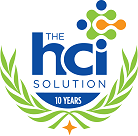The Three A’s of Selecting a Downtime Solution
In all different downtime scenarios, time and money, as well as staff and patient safety can be easily compromised. In today’s world, efficiency and accuracy are of upmost importance when it comes to medical care. Planned downtimes take a lot of time and preparation to continue running day to day operations safely and smoothly. Unplanned downtimes can leave you debilitated and vulnerable without a solution in place. Downtime Solutions are key to keeping businesses up and running without compromising productivity and safety. There are many different downtime solutions to consider, but how does one decide which of these to adopt? We recommend considering the three A’s when selecting a downtime solution: Availability, Adaptability, and Accountability.
The three A’s to consider when selecting a Downtime Solution:
1) Availability: The most common HCIS downtimes are planned. However, most downtime solutions are designed for planned and unplanned HCIS downtimes. What’s commonly overlooked when selecting a downtime solution is whether or not it addresses technical planned or unplanned downtimes. Technical downtimes are the nightmare CIO’s and IT personnel may encounter in their professional life. Though extremely rare, addressing technical downtime is a must when considering different downtime solutions. Technical downtimes happen when you lose your internal network to specific locations or even facility wide. Downtime solutions need to address this with either local “stand-alone” downtime PC’s and/or cellular cloud solutions. Selecting a solution that meets all downtime possibilities will keep your user’s ready for patient care and keep senior management from asking why you weren’t ready.
2) Adaptability: Think about using a software solution 3-5 times per year. How familiar is that software going to be to you? Downtime solutions are used so infrequently the typical user will have limited memory of its usage within 3 weeks. Having worked with downtime solutions for over 20 years, the most common complaint is familiarity. The key factor in a downtime solution’s successful adaptability is ease of use and familiarity. If a downtime solution is easily accessible during HCIS or technical downtimes, and looks and functions like your uptime solution, your adaptability could be 100%.
3) Accountability: With the goal of ease of use for your downtime solution you don’t want to sacrifice usage tracking abilities. When we talk about a HCIS downtime it’s not typically a problem with tracking user access since most will use HCIS or AD credentials to log on. But what about technical downtimes when HCIS or AD isn’t available? It’s important to make sure your downtime solutions have comprehensive audits to track patient content access during all types of downtime.
We at The HCI Solution trust that if you select a downtime solution using the three A’s outlined, you can continue to run operations smoothly without compromising the high standard of care everyone expects and strives for. The HCI Solution’s answer to this problem is the ContinuITy™ Downtime Portal. Continuity Downtime Portal was created in a hospital with their needs in mind. We encourage you to explore and utilize the resources we have provided below. Don’t allow your workflow to be negatively impacted by any kind of downtime, be prepared and be safe.
To learn about The HCI Solution’s ContinuITy™ Downtime Portal CLICK HERE
CONTACT US to set up a free demo at a time convenient for you.


